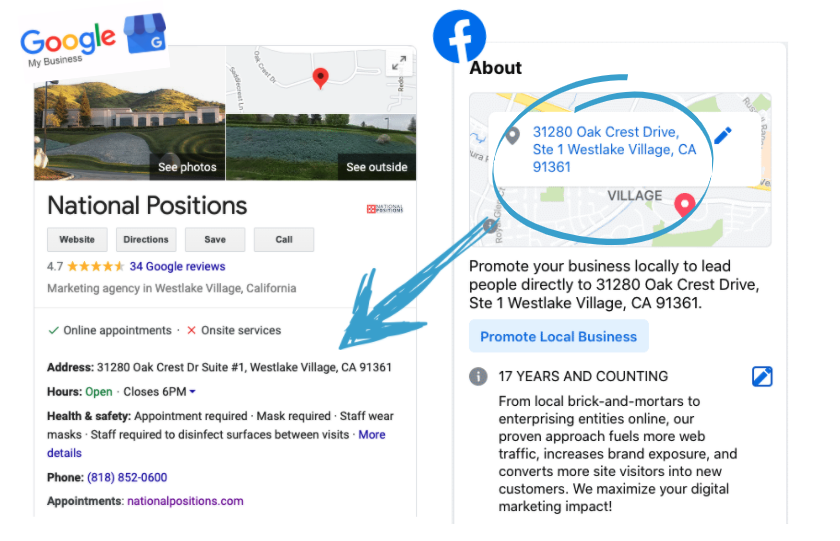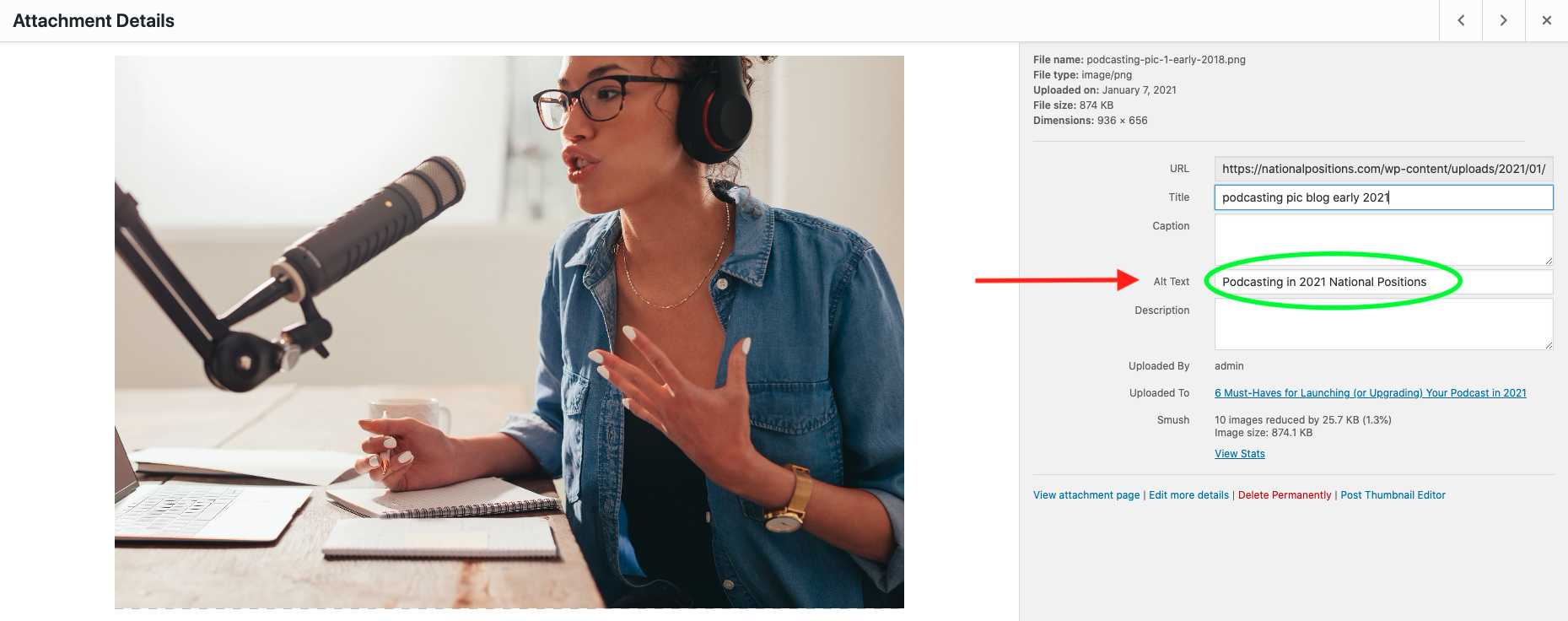You have heard the drumbeat for years—the undeniable need for top-notch search engine optimization (SEO). While the beat continuously changes, one thing remains the same: SEO is still a necessity—and not just on your website.
In 2021, this acronym is being applied to nearly all types of search-based activity, from video SEO (VSEO) to Amazon SEO to even SEO for podcasts. Every purchase, subscription, engagement, view, or download begins with some sort of search.

So, if there were clear-cut, easy-to-implement ways to optimize your SEO efforts and gain additional exposure, wouldn’t you be first in line?
Well, there are. And this blog is your ticket to the front of that line. So grab your water bottle and a pair of comfortable shoes. We’re about to go on a little trip down SEO lane.
Use Lighthouse (It’s Free)
If you want to get an idea of how your site is performing—in real-time—Lighthouse is beyond valuable, free, and if you’re using Google Chrome, you have access to it right now.
Lighthouse gives you a fairly robust review of your site’s performance and shines a spotlight on issues that you can tackle to improve performance. It also paints everything visually with graphs and color codes, so even if you aren’t a technical wizard, you can still get a clear understanding of problem areas. (Green is good! Red is bad!)
View the video for a quick demonstration, and follow along on your own site.
Now addressing any issues you see may take some professional help (we can’t all be technical SEO experts), but you will at least have a rough idea of where you need assistance.
You can also use this information when speaking with an agency you think might be a good match for your brand.
If you want to know if they really know their stuff, use your Lighthouse report and just go line by line and ask “How would you address this issue?” If they are worth their salt, they will be more than happy to answer your questions.
Check Your Domain Authority (DA)
Your domain authority (DA) is kind of like your website’s credit score. The higher the DA, the better. Improving your DA through all matters of SEO, such as content, traffic, healthy links, proper alt tagging and meta descriptions, is an ongoing process. And the higher you can get your DA over time, the more search engines tend to trust your site.
For example, backlinking is just one ranking factor that is rolled up into your domain authority score. A simple way you can check your domain authority right now is by using the Domain Analysis Tool from MOZ as shown in the video example below.
Let’s say you have been working for months getting your brand’s content on guest blog sites because you are trying to rack up those juicy backlinks. You have secured 100 new links and your domain authority…actually goes down!
How could this be?! Well, we hate to say it, but all blogging sites are not created equal. If all (or the majority) of these backlinks are coming from sites with very low DAs (which is common), all of these backlink threads may actually be dragging your site’s trust factor (authority) down with them.
So, as you’re working on your SEO, periodically take a look at your domain authority to make sure it is improving. If it starts to take a hit, you will need your team (or agency) to investigate and find a solution.
Leverage Linking
While poor linking strategies can do far more harm than good, a proper linking strategy can make a world of (positive) difference, via backlinking and internal linking.
The link juice you can gain from valuable backlinks is fantastic and should be part of your ongoing strategy.
However, as the title of this blog post suggests, if you want to leverage linking for SEO—right now—internal linking is what you have easy access to.
An area of SEO that has gained (and will continue to gain) massive traction over the past five years is user experience (UX).
Google has continuously incorporated the user experience into ranking algorithm updates, which not only refers to the build of your site, but also the usability of your site.
Internal linking is your opportunity to direct the flow of users on your site.
For example, if we’re writing a blog post and mention a service like National Positions SEO Strategies, rather than expect a visitor to navigate and find what we’re referring to, we just link to it directly. (See what we did there? Shameless plugs are fun.)
You get the idea. Take the time to see what copy and images make sense to link throughout your website.
Don’t go crazy (too many links can be confusing and actually damage UX), but consider the path your customers might take and see where you can help them along their journey with a few helpful links.
Make Sure All Your Profiles Match GMB
One area that flies under the SEO radar for a lot of businesses is the consistency of information. This is especially important for brands that depend on visibility within their local market, such as retail locations and restaurants.
When you create your Google My Business (GMB) profile, areas such as your business address, website URL, and contact number should be consistent with your website and the information on your social profiles. If you have different address structures in the footer of your website, your GMB profile, and your business’s Facebook profile, this can work against you when it comes to search.

The more places that search engines can tie your business name, location, website, and contact number together (consistently), the better your SEO impact. This same tip applies to any online directories your business is on.
So, take a little time and make sure all this information matches across all your profiles to reduce or eliminate confusion amongst your customers and search engines.
Tag Those Images…All of Them!
You might have heard the term “alt tag” before, and perhaps your eyes glazed over a bit. We totally understand.
But think about it this way: If you were searching for a song on iTunes and every track just said “music file” or “MP3 download,” you would have no idea where to begin. This same concept applies to images on your website.
Properly alt-tagging your images gives search engines a little more context as to what the image is and how it relates to the content on your site.
Which—you guessed it!—can have a positive impact on SEO.
Too often we find hundreds of photos on a new client’s website that are just labeled “screenshot,” “image 2,” or simply “photo,” which does nothing for SEO.

So, be sure that your team or agency is properly alt-tagging your images so your SEO is getting that extra little bit of juice. Typically, you want to tag your images with some contextual word and a basic keyword or two, like “Corgi playing fetch” or “Sanitary pet lodging.” Somthing generally descriptive with some keywords to add the proper context.
Add VSEO to Every Video!
We’re not going to shout from the rooftops about how important video is…just yet. However, if you’ve committed to creating an ever-growing library of content on YouTube, this section is for you.
VSEO is exactly what it sounds like: search engine optimization for video.
This is where context really matters. YouTube has become a staple in the customer journey.
Want to know how good a product is? YouTube has reviews. Trying to choose between two brands? YouTube has you covered with comparison videos. Want to watch a podcast instead of listening to it? Yes, welcome back to YouTube.
Even the biggest content creators on the platform optimize everything for search, such as titles, descriptions, tags, thumbnails, and even the nitty-gritty settings. (After all, how do you think they’re getting so many views?!)
You may be inclined to just host the video on your site…but what if your video could also be found on YouTube? And you have a link to your site within the description as well? Every little bit helps!
Here is a short VSEO checklist for you:
- Video Title
- Video Description
- Description Links
- Video Category (like educational, business, or how-to)
- Tags (lots of them)
- Location Tagging
- End Cards and CTAs
This is honestly a subject in and of itself, and we’ve written an entire eBook on it that you can access and download here for free. Enjoy!
Show, Don’t Tell, Wherever Possible
This one covers almost everything under the SEO sun and is definitely easier said than done.
The short version is this: Search used to simply be based on keywords and word count. This is what every SEO expert talked about and hyper-focused on. Now, SEO is much more heavily weighted on user experience and the context of your content.
Better content + better context + better user experience = better site performance + more love from search engines.
Now with this in mind, if your website can show more than tell, you will be on the right track.
Would you rather read a product description or see a 3D rendering that you can interact with? Would you rather hear a brand talk about how good they are or watch a video testimonial where a real customer talks about their experience?
Do words still matter? Of course. But in our digital age, anywhere you can provide a visual (or audio) experience as a supplement or replacement for some of that text should be a top priority.
Think: images, graphics, infographics, gifs, videos, etc.
In Conclusion (Bonus Tip)
In wrapping up this blog post about 7 Simple Ways to Improve Your SEO Right Now, we want to highlight the importance of “asking” and “answering” questions with your content and even your content titles.

To get to this blog post, you might have searched “How can I improve my SEO right now?” or something similar.
The majority of those searching these days do so with questions.
- “How do I…?”
- “Where can I…?”
- “Why is my…?”
You get the idea…
Folding these types of phrases into your content can provide not only valuable context for search engines, but also for guidance as you’re creating your content—no matter what type.
So, with that final bit of context, you have plenty of options that can help you improve your SEO starting at this very moment. And if you do need a helping hand or would like our experts to join you on your SEO journey, please feel free to contact us anytime.